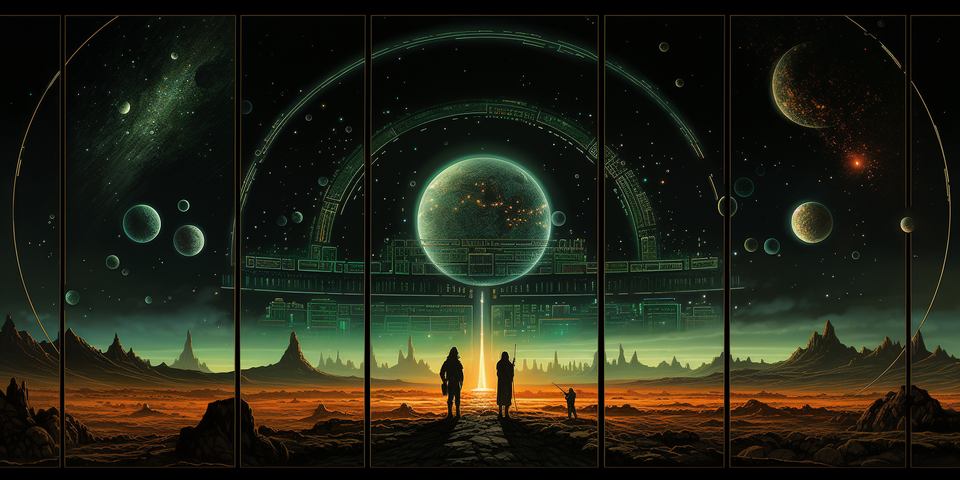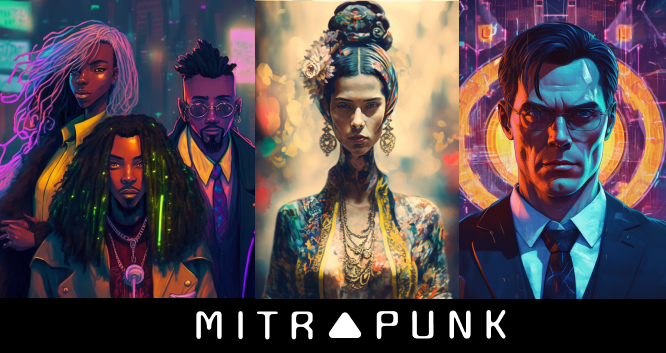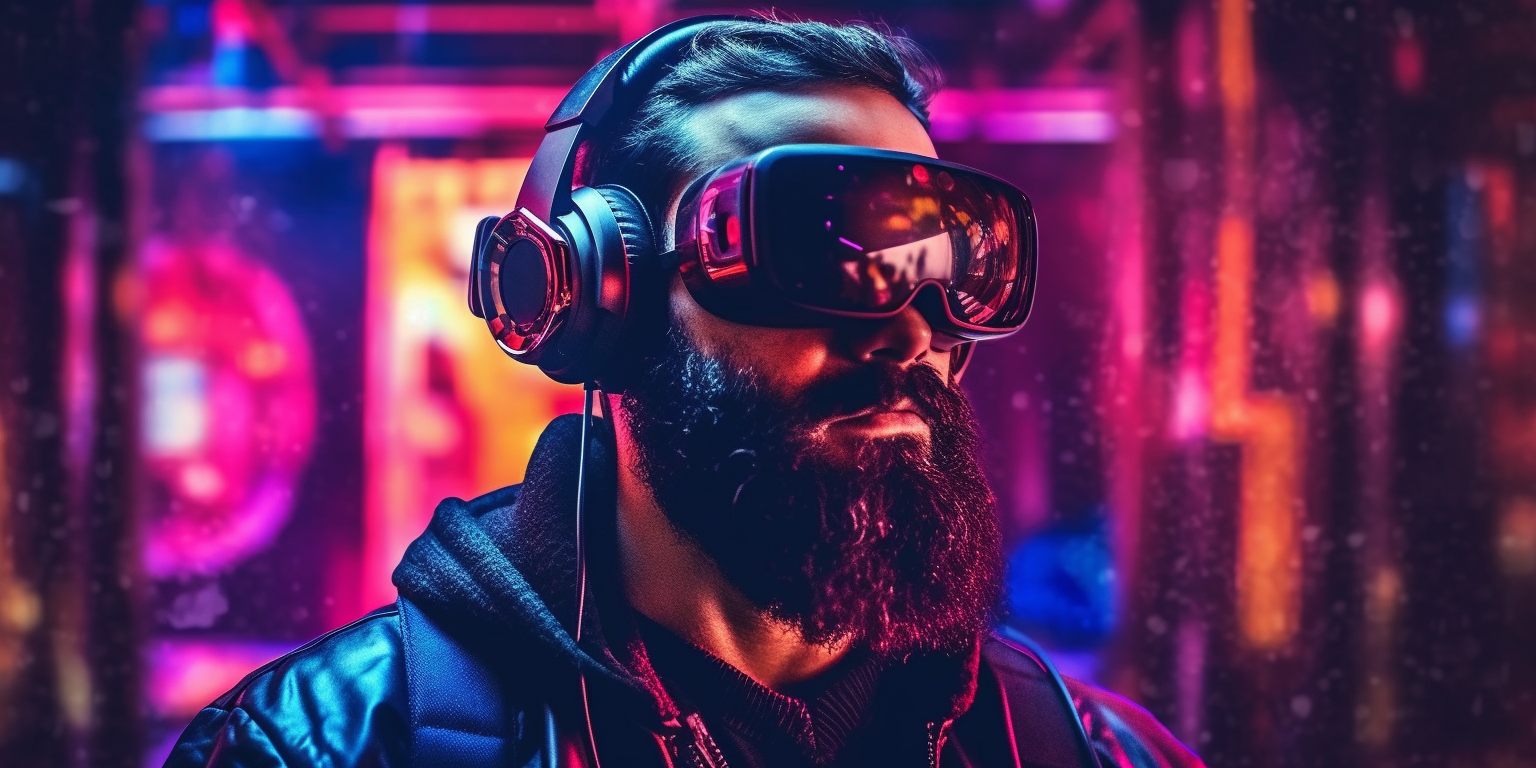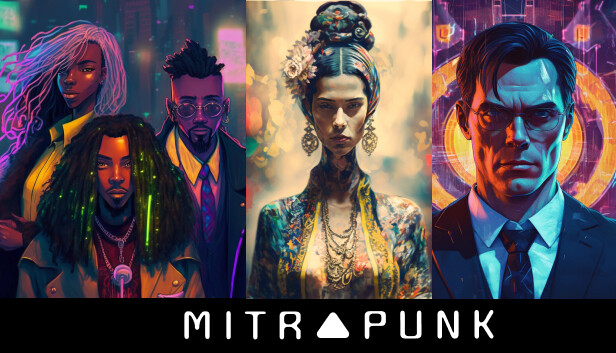Mitrapunk: Multiverse, Metaverse, Simulation and Video Game

Intro: Wrong Path
Games are the gateway to the universe. As children, we understand and decipher the world around us through the innocent eyes of play. Through games, we explore, we experiment, we make sense of our surroundings. We play, and in the process, we learn. However, somewhere along the road of growing up, we take a detour. Instead of continuing to learn through play, we find ourselves caught in the drudgery of study, work, and an unending list of obligations. We endure, we persist, often grumbling but rarely ceasing.
Our refuge? The vibrant world of video games. An escape to a realm where the rules of the world bend, where imagination is unfettered, where the child within us finds expression again. The simplicity of a child's life, where playing and self-development are beautifully intertwined, gradually splinters into separate, often contradictory activities. We surrender to the mundane, the tedious, the "necessary."
However, there's a light at the end of this tunnel, an uprising that promises to return us to the rightful path of blending work with play. This revolution isn't mere wishful thinking but a tangible concept, one that is about to disrupt the way we perceive our lives. It goes by the name of Mitrapunk. Get ready, for the revolution is just beginning.
Exploration gives opportunities
Once upon a time, the allure of new lands promised vast resources and untapped potential. Now, as our world has evolved and progressed, opportunities are not confined to physical spaces but are peppered throughout the fabric of our existence. The secret lies in exploration. Much like a child unravels the mysteries of a new toy, finding unconventional uses, we too need to expand our horizons, to view the world from different angles. Delving into alternate universes isn't merely an exercise in fantasy, but a gateway to untold opportunities. Remember how the Internet, that vast, digital Pandora's box, sparked a revolution? Those who recognized its potential reshaped our world. Just imagine what unearthing new realms could accomplish.
Realities
Let's break away from the age-old notion that reality is limited to our immediate surroundings, the tangible, the seen. It's time to level up your perception. Through this narrative, I invite you to delve into the fascinating exploration of what constitutes reality, or rather, realities. Our imagination and curiosity aren't just figments of fancy. They fuel the creation of alternate worlds, as real and as vibrant as tales spun from distant lands. Just as stories of foreign countries stir our senses and captivate our thoughts, these conceptualized realities can be equally, if not more, engaging. It's time to take the leap, to embrace the myriad dimensions of existence that lie just beyond the realm of the conventional.
1. Multiverse and Parallel Universe
These two concepts are deeply interrelated. The multiverse theory posits the existence of multiple or potentially infinite universes, including our own. A parallel universe is a type of alternate universe, existing in a multiverse, where conditions may be very similar to our own universe or wildly different.
2. Virtual World and Virtual Reality:
A virtual world is a computer-based simulated environment inhabited by users' digital representations, known as avatars. Virtual reality is a technology that allows us to interact with these virtual worlds. Through the use of VR headsets and other devices, users can experience the virtual world in a more immersive, realistic manner. Ready Player One is the iconic example.
3. Metaverse
The Metaverse, a term that's gaining significant popularity, represents a collective virtual shared space that's created by the convergence of virtually enhanced physical reality and physically persistent virtual reality. This involves the merging of all virtual worlds, augmented reality, and the internet into a shared, collective space. It can include game worlds, other virtual worlds, and augmented reality overlays on the real world.
4. Reality and Simulation Theory
Reality is the world or state of things as they actually exist, as opposed to an idealistic or notional idea of them. The simulation theory, on the other hand, suggests that reality, as we understand it, is a simulated or virtual reality created by a more advanced civilization or by some form of conscious AI. The jury's still out on this one, as we lack definitive proof to either confirm or deny this theory.
5. Game Worlds and Multiverse/Metaverse:
Game worlds, which are virtual spaces where video games take place, also contribute to the concepts of the metaverse and multiverse. Each unique game world can be considered a universe within a larger multiverse of games. They are part of the broader Metaverse when they are connected or accessible through a shared network or interface. Games bring the most valuable part to concept of Metaverse - we have fun stuff to do there.
6. Mitrapunk Universe
Mitrapunk is a unique universe, cleverly intertwining the game world with reality. This fusion takes the traditional means of earning money and power in the real world and reshapes them into enjoyable experiences. Through this method, the need for formal work structures and disciplinary institutions diminishes. We could potentially bypass traditional workforce education and combat unemployment, all within this virtual ecosystem. An added advantage? Everything exists digitally from the get-go, making physical offices a relic of the past.

7. The Future
There's another intriguing realm of universes that we are destined to explore. However, the most fascinating aspect of these universes is that we are their creators. We craft future in a similar fashion to how we create games - by envisioning a desired future outcome, something that holds significant importance for us, and employing all available resources to reach that vision. Games, in essence, embody the aspirations of their designers, demonstrating to players what they aim to convey, and leveraging every tool at their disposal to accomplish this.
The universes we fashion and the games we design both stem from our capacity to dream and our tenacity to transform those dreams into reality.
One possible script of future might be:

Other Realities
Each of the concepts we will be discussing stems from humans' innate ability to weave and share stories. Games, a fundamental pillar of human culture, have evolved significantly with the advent of computers. Today, video games offer the most immersive way to experience a narrative, allowing us to embody different personas, traverse unfamiliar worlds, and at times, even momentarily forget our real-life identities.
From the theatrical stages and movie screens of yesteryears to the interactive realms of modern gaming, we've consistently challenged the conventional perception of reality. We've come to realize that our existence isn't strictly linear, but instead, provides numerous gateways to alternate realities. Everyone navigates these exits uniquely—some even venture to construct new realities of their own.

